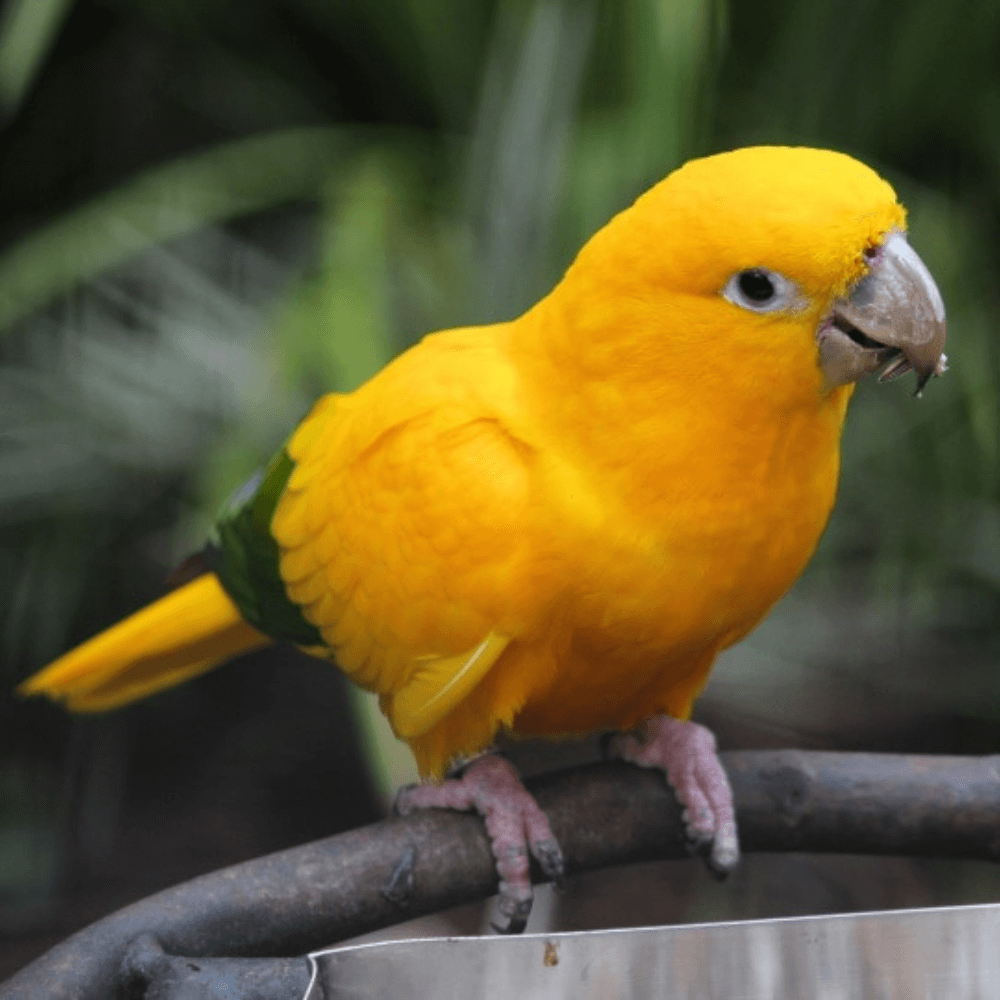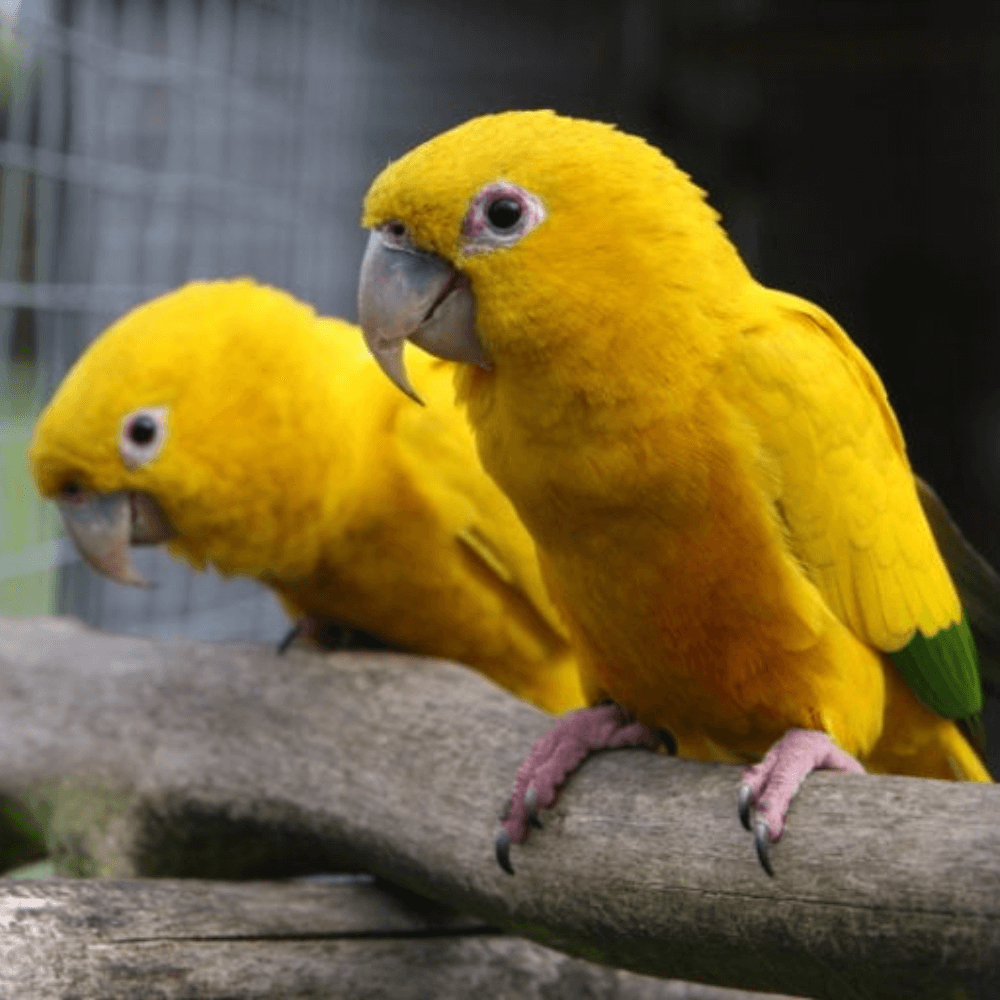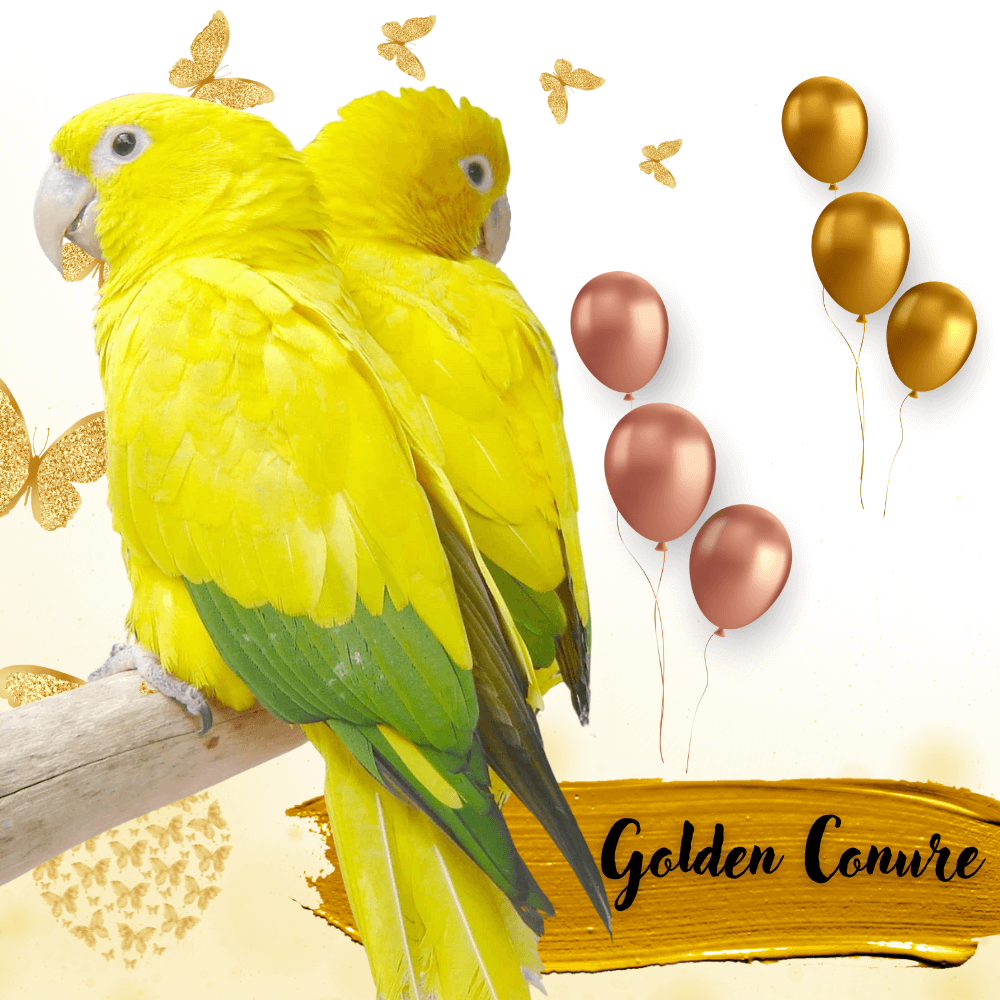Brightly yellow, golden conure (or Bavarian queen conures) are, without a doubt, beautiful parrots. It can also make a very kind and affectionate, courageous, intelligent, and entertaining companion, although it is rare and expensive. One thing is for sure: they are very special parrots that seem to steal the hearts of every bird owner they meet.
- Common names: Golden conure, Bavarian queen’s conure, golden parakeet, golden parrot, yellow conure
- Scientific name: Guaruba guarouba, formerly Aratinga guarouba
- Golden conure size: A large conure, it can reach a length of about 14 inches, weighing about 8 ounces
- Golden conure lifespan: 20 to 30 years
Origin and history
Native to northeast Brazil, golden conures are only found in a small area south of the Amazon River. Spotting wild golden conures is difficult, despite their color, as they are not particularly sociable and only rarely form herds.
This means that their life in the wild is relatively unknown. They are thought to be nomadic, moving from moist lowland forests to tall trees on the mainland (non-flood-prone land) and then to clearings during the breeding season.
These birds have been on the endangered species list since 1975, and their small population contributes to the lack of sightings.
While it has been accepted for some time that less than 3,000 organs remain, a 2016 International Union for Conservation of Nature update indicates that this is an underestimate. . Today the population is thought to be between 6,600 and 13,400 birds.
This realization, however, has not allayed fears about the bird’s endangered status. The population is predicted to continue to decline due to habitat destruction and illegal trapping, including the removal of babies from the nest. Captive breeding programs are very important for this species and take priority over sale as pets for many breeders.
Golden Conure personality

Golden conures are active pets that love to climb, chew and play. Owners should make sure to supervise these birds when they come out of their cage to avoid accidents due to their great curiosity about the world around them.
Being conure, these birds are very vocal and can produce loud calls, making them a poor choice for those who live in apartments or condominiums. They can, however, develop a fairly extensive vocabulary.
Golden conures are very intelligent and need lots of mental stimulation to avoid boredom and destructive behavior. In this regard, it is slightly more sensitive than many other parrots.
While plumage is often a warning you’ll hear from neglected or bored parrots, for golden conures stress is the primary cause of this self-destructive behavior they seem prone to. It can be avoided with tons of attention and distractions and by giving the bird some freedom.
In general, golden conures make great pets. They love cuddles and are receptive to multiple people when properly socialized, allowing them to fit in well with a family. Aggression is usually not a problem except when they breed.
Golden Conure colors
Golden conures are often confused with macaws due to their larger heads and beaks. The difference is that the conure’s tail is much shorter than that of macaws.
Mature golden conures have a bright yellow color all over their bodies. The only exception is the tips of the flight feathers, which are dark green in color. They have a bald ring around their eyes, a horn-colored beak, and pink legs and feet.
Juvenile golden conures are identifiable by green spots in the yellow plumage of the body.
Care for conures

Golden conures are affectionate, beautiful, and intelligent, making them great pets. Unfortunately, they are quite expensive and almost as rare in captivity as they are in the wild. They can be quite difficult to find because their sale is heavily regulated both in the United States and abroad.
But don’t worry, if you fancy owning a golden conure, it’s possible. You may just need to take a few steps forward to achieve this.
For example, you and the seller will need a permit from the US Fish and Wildlife Service to purchase a parrot from another state. Do plenty of research on what is needed before adopting. To find a golden conure breeder, a good place to start is Bird Talk magazine’s breeder directory.
If and when you are able to locate an available golden conure, you will be rewarded with an incredibly entertaining and interactive pet. Owners report that their birds were able to learn lots of fun tricks, develop impressive vocabulary, and even seem to speak in context at times.
It is important that your bird does not feel confined most of the time. The golden conure’s high energy level should be considered when choosing a cage. It should be large enough to give it room to roam, climb, and burn energy. It rarely flies in captivity, but that doesn’t mean these acrobats will be happy in a smaller house.
Conure foods
Golden conures in the wild normally feast on a varied diet of fresh fruits, vegetables, nuts, berries, and grains. The best thing is to give him as varied a diet as possible, which will allow him to stay healthy.
It should consist of fresh foods like fruits, nuts, berries, and vegetables, as well as high-quality commercial pellets. This combination will ensure that the pet’s conures receive adequate nutrition.
As active birds, golden conures require plenty of exercises to maintain peak body condition. Those wishing to own a golden conure should ensure that they can dedicate at least three to four hours a day to supervising their bird during out-of-cage exercise and play.
Golden conures like to climb and seem to enjoy toys like ladders, ropes, and swings that give them something to “navigate”. A play stand is also necessary to give the birds a sense of freedom out of the cage while having a home base filled with toys to occupy their time. They are quite comical in these playful adventures and will often demand your attention.
These birds also have big jaws that need to exercise their strong jaw muscles. Owners of golden conures quickly learn to provide their pets with plenty of chew toys in order to spare their own business. Wood will be your mainstay because it’s easy to replace, but leather, rope, and beads will also be appreciated.
Related article:

